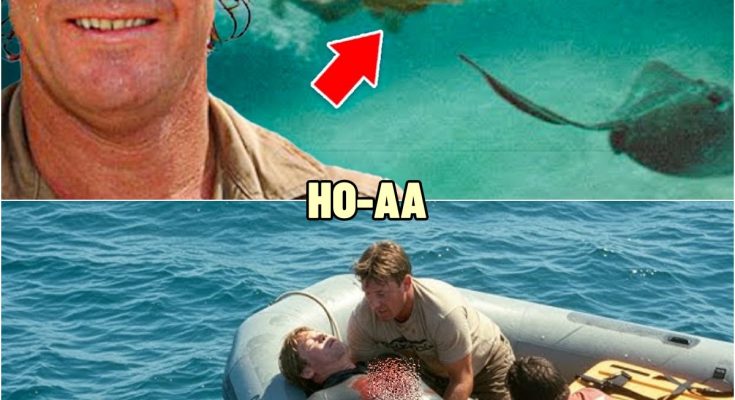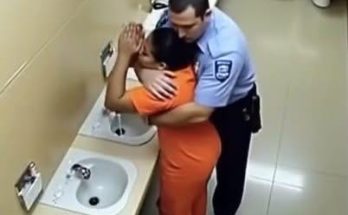The TRAGIC Last Dive of Steve Irwin – Wildlife Conservationist and TV Host | HO!!

On a clear September morning in 2006, the world lost one of its most beloved conservationists in a way no one could have predicted. Steve Irwin—Australia’s “Crocodile Hunter,” wildlife warrior, and global TV icon—was killed not by the jaws of a crocodile or the fangs of a snake, but by the silent strike of a stingray beneath the tranquil waters of the Great Barrier Reef.
Nearly two decades later, questions remain about what really happened on Bat Reef that day, why the fatal footage has never been released, and what Steve’s final moments reveal about the man behind the legend.
The Making of a Wildlife Warrior
To understand the impact of Steve Irwin’s death, you have to understand the force of nature he was in life. Born in 1962 in Essenden, Victoria, Steve was raised in the wild, the son of a herpetologist and a wildlife rehabilitator. By age six, he was handling snakes; by nine, wrestling crocodiles under his father’s watchful eye. In the 1990s, the rest of the world met Steve through his hit series, The Crocodile Hunter.
Unlike the polished hosts who dominated wildlife TV, Steve was raw, sunburnt, and utterly fearless. He sprinted barefoot into swamps, cradled venomous snakes, and dove headfirst into danger—not to provoke, but to educate. His signature catchphrase “Crikey!” was never scripted; it was pure, unscripted excitement. His authenticity and passion for misunderstood animals made him a household name across continents.
By his side was his American-born wife, Terri Irwin, who shared his mission. Together, they transformed Australia Zoo in Queensland into an international sanctuary and raised two children, Bindi and Robert, in the heart of the bush. Steve didn’t just teach respect for wildlife—he embodied it, believing that knowledge and compassion could bridge the gap between humans and the world’s most feared creatures.
The Calm Before the Storm
On September 4, 2006, Steve was filming a new documentary, Ocean’s Deadliest, intended to spotlight the ocean’s most misunderstood animals—box jellyfish, sea snakes, and crocodiles. Ironically, the day’s shoot wasn’t supposed to be dangerous. Bad weather had paused main production, so Steve and trusted cameraman Justin Lyons decided to film some simple “B-roll” shots on Bat Reef, just off Port Douglas. The plan: capture Steve swimming above the reef, gentle filler footage for the documentary.

The water was unusually clear, the sky cloudless. It was the kind of day that felt safe, routine. Steve slipped into the water with Justin, both men veterans of countless underwater shoots. Below them glided a massive short-tailed stingray, nearly eight feet across, resting on the sandy bottom. Stingrays, while equipped with venomous barbs, are generally passive and rarely aggressive. Steve had encountered hundreds; there was no reason for concern.
Justin’s camera rolled as Steve hovered above the ray, careful not to block its escape. They circled it slowly, capturing its graceful movements. Everything was routine—until, in a blink, it wasn’t.
Seconds That Changed Everything
Without warning, the stingray shifted. In a flash, its tail arched upward and unleashed a rapid barrage of strikes—over a hundred in less than five seconds. Most missed, but one barb, serrated and venomous, pierced Steve’s chest.
At first, Justin thought the barb had punctured a lung—serious, but survivable. Steve, ever calm, surfaced and locked eyes with his cameraman. His words were quiet, chilling: “I’m dying.” Blood clouded the water. Justin and the crew scrambled to pull Steve onto their inflatable boat. Steve, fighting through shock, pulled the stingray barb from his own chest—a move that, tragically, may have hastened his end.
The wound was catastrophic. The barb had pierced Steve’s heart, causing massive internal bleeding. The venom wasn’t the threat; it was the location of the strike. The crew performed CPR for over an hour, but as they raced toward shore, hope faded. There was no ambulance, no emergency room—just a desperate fight in the middle of the Coral Sea to save a man the world thought was untouchable.

The Aftermath: Shockwaves Around the World
At 12:53 p.m., Steve Irwin was pronounced dead on the shore of Low Isles. The official cause: a penetrating heart injury from a stingray barb. The injury was described by the medical examiner as “unsurvivable.”
News of Steve’s death spread with astonishing speed. Headlines flashed across CNN, BBC, and every major outlet: “Steve Irwin Killed by Stingray.” Many refused to believe it at first, convinced it was a hoax. But by evening, thousands had gathered outside Australia Zoo, lighting candles and leaving flowers. Across the globe, children drew crocodiles and wrote messages: “Thank you for teaching us not to be afraid.”
The most poignant tribute came during a televised memorial at Australia Zoo. Steve’s eight-year-old daughter, Bindi, stood before a silent crowd and, without tears or hesitation, said: “My daddy was my hero. I want to help endangered wildlife just like he did.” There wasn’t a dry eye in the stadium.
The Fatal Footage: Why It Will Never Be Seen
Perhaps the most haunting detail of Steve Irwin’s death is that it was captured on film. Justin Lyons later confirmed that the camera was rolling from the moment Steve approached the stingray to the moment he surfaced, whispered his final words, and collapsed. The footage, described as “devastating,” has never been released to the public.
Terri Irwin, Steve’s widow, has been adamant: the footage was either destroyed or locked away forever. “That tape should never be seen,” she told interviewers. “It’s not who Steve was; that moment doesn’t represent his legacy.” Despite rumors and fake clips circulating online, the real tape remains unseen—a decision respected by those who believe Steve’s life should be remembered for his passion, not his final tragedy.
Why Did the Stingray Strike?
The question that haunted fans and experts alike was simple: why did a normally docile animal kill the world’s most experienced wildlife handler? Marine biologists explain that stingrays are not aggressive; their barbs are a last-resort defense. Most injuries occur when a ray is accidentally stepped on, and fatalities are exceedingly rare—only two had ever been recorded in Australian history before Steve.
Experts believe the ray, sensing a threat from above and unsure of its escape, reacted instinctively. The strike was not calculated, not personal—just a tragic collision of instinct, timing, and anatomy. The barb struck at the worst possible angle, piercing the pericardium and heart. Even in an operating room, the injury would have been almost impossible to survive.
Steve Irwin had spent decades around stingrays, respecting their space and understanding their behavior. That morning, all it took was a moment—one flick of a tail, one wrong angle.
The Legacy Lives On
Steve Irwin’s death was a biological accident, but his life was a masterclass in courage, compassion, and advocacy. The Australia Zoo, once a small reptile park, is now a global center for conservation and education. Bindi and Robert Irwin have grown into conservationists themselves, carrying their father’s torch and expanding his message to new generations.
The family’s nonprofit, Wildlife Warriors, continues to fund anti-poaching efforts, animal hospitals, and disaster relief worldwide. Steve’s philosophy—that the wild is not something to fear, but something to fight for—echoes louder than ever.
The Final Word
Steve Irwin’s last dive was not a reckless stunt or a tragic mistake. It was a moment that revealed the unpredictable power of nature—the very force Steve spent his life defending. He knew the risks better than anyone, and he faced them not for fame, but for the animals and the people he loved.
His final words, “I’m dying,” were not a surrender, but a statement of fact, delivered with the same calm he brought to every challenge. The footage of that day will never be seen, and perhaps that’s for the best. Steve’s true legacy is not in his death, but in the millions he inspired to care for the world’s wild places.
The wild is breathtaking, but it is never truly safe. Steve Irwin taught us to respect it, to protect it, and—above all—to never stop fighting for it.



